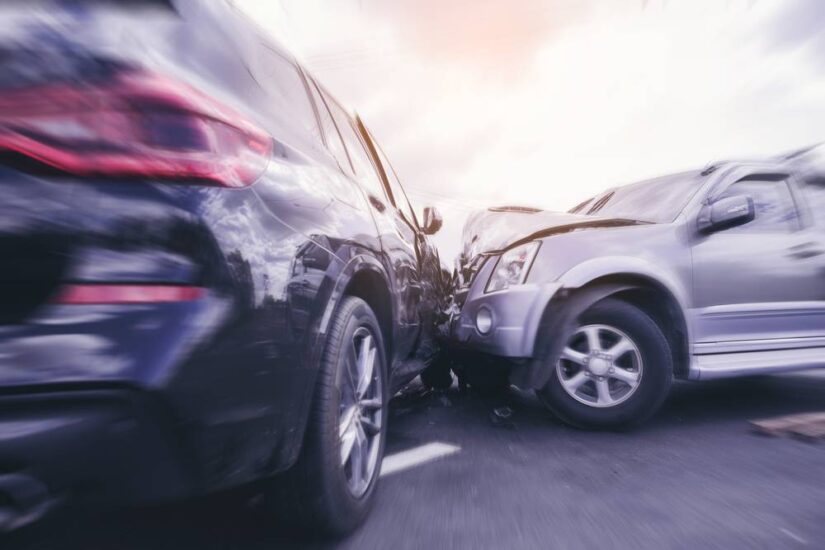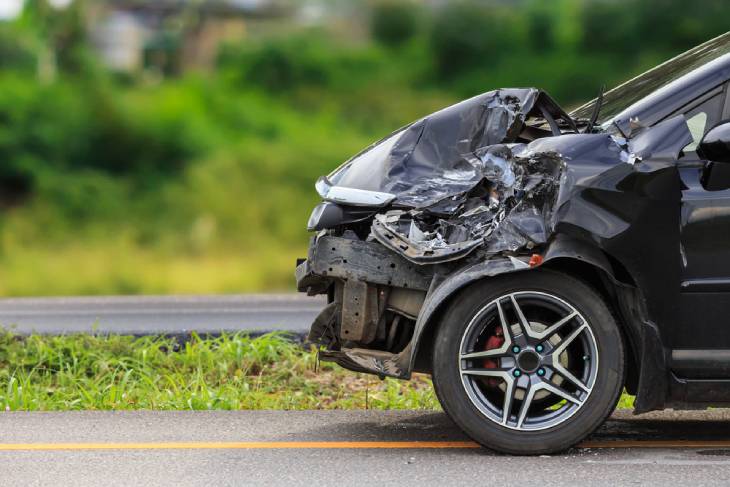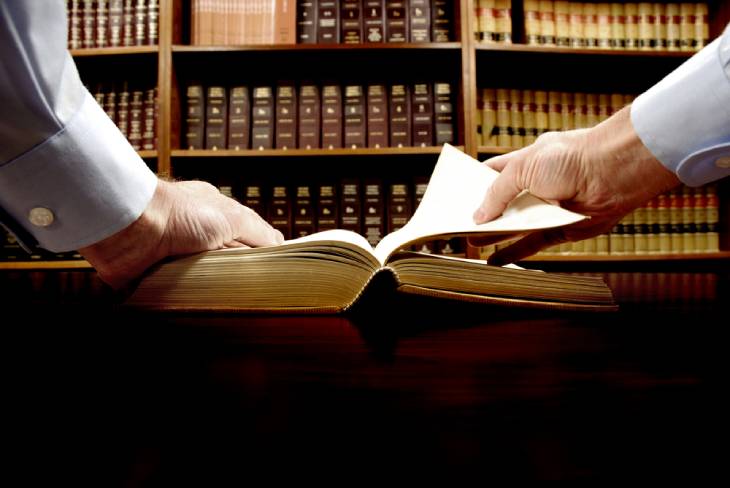
The sudden nature of car accidents can catch you off guard. You may be driving your usual commute or running errands when another car careens into your vehicle. Those first initial moments are likely to shock you and make your adrenaline soar.
Fortunately, California’s car accident laws are there to protect car accident victims from incurring massive financial losses. If you are injured, you could have medical bills from the ambulance ride, hospital stay, surgeries, physical therapy, and prescriptions. Additionally, the doctors may tell you that you need to rest and stay home from work until you heal, which could be weeks or even months when you’ll be forced to go without your wages.
In some cases, car accident victims are unable to work again. Where will that leave you when you have no money coming in and expenses piling up thanks to someone else’s negligence?
The personal injury lawyers of Maho Prentice, LLP have successfully helped car accident victims in Southern California recover the compensation they deserve for their car crash injuries. Our prominent attorneys have served the area for over 20 years and have 50 years of combined experience representing these types of personal injury cases. In this informative blog post, we provide a deeper understanding of California car accident laws and how they can affect your car accident injury claim.
Understanding California’s Fault-Based Insurance Laws
California follows an at-fault-based insurance system when it comes to car accidents and all motor vehicle accidents such as a truck accident or motorcycle accident. Under this system, the driver who caused the accident is at fault and responsible for the injuries and damages that result from the collision.
This differs from states that follow a no-fault system, which requires drivers to go through their own insurance company to file an accident claim, regardless of who was at fault. The downside to at-fault insurance models is that the insurance companies for all involved drivers may take some time to investigate to determine who is at fault. They use evidence such as police reports, accident reconstruction analysis, statements from witnesses, and other details to help them arrive at a decision.
You may think this will be an easy process if the other driver barreled into you. However, another layer of complexity with comparative negligence laws can potentially impact your car accident case.
What Is California’s Comparative Fault Rule and Why Does It Matter?
Like insurance, every state chooses the comparative negligence rule that it will follow. While some accidents may clearly reveal one driver to be completely at-fault, in other scenarios, there may be multiple vehicles or there may be shared fault between two drivers.
For example, if you were stopped at a red light and the vehicle behind you slammed into the rear end of yours, they would be automatically considered at-fault. However, if you were driving through an intersection on a green light and going over the speed limit when someone else runs the red light, you could be partly blamed since you were speeding.
In that second scenario, the comparative negligence laws would apply and assign each driver a percentage of fault. The driver who ran the red light would have a higher percentage of fault, such as 90% while you may receive 10%. This could potentially reduce your payout by 10%.
Since California uses the pure comparative negligence model, you could technically be up to 99% at fault and still recover compensation. This is why many car accident victims obtain legal representation through a car accident lawyer to protect their legal rights.

What Are the Insurance Requirements Mandated by California Law?
California laws require that every driver have car insurance to legally be on the roads. The minimum coverages are mandated to provide protection in the event of a car accident. The laws state that you minimally must have $15,000 to cover injuries or death for one person plus $30,000 for injuries or death for more than one person. It also requires $5,000 for property damage.
Proof of your insurance coverage must be with you at all times when you are driving. Without your insurance information to serve as proof, you could lose your driver’s license and have to pay fines if you get in an accident.
The problem with only having this minimum coverage is that it doesn’t cover very much. If you cause an accident and only have the bare minimum required with your auto insurance policy, you may be personally liable for any injuries and damages that you cause in excess of the policy.
This is why you should think about adding additional coverages. While they are not required by California law, they can protect you in these types of situations.
How Adding Optional Coverage to Your Auto Insurance Policy Benefits You
Underinsured and uninsured motorist coverages are often recommended as an extra measure of protection. While California car accident laws require drivers to hold at least the minimum coverage, many people break the laws.
In California, insurance companies are required to offer you these additional coverages even though you are not obligated to add them to your policy. They can be worthy investments if you get into an accident with an uninsured or underinsured driver. This is something you should discuss directly with your insurance company and/or agent.
Uninsured Motorist Coverage
Uninsured bodily injury motorist coverage can pay for the cost of damages incurred by you and any passengers if you are injured by a driver without insurance. It will limit the compensation to the amount of your coverage.
Underinsured Motorist Coverage
Underinsured motorist coverage kicks in when another driver causes your accident but has the minimum insurance requirements that aren’t enough to cover the full amount of your damages. This prevents you from being forced to pay out of pocket for injuries someone else caused you to suffer.
Both uninsured and underinsured motorist coverage are highly recommended due to the prevalence of drivers in this state who either have only basic coverage or are not insured. If you do not wish to have these coverages, you must put it in writing. It may be an added expense that makes your monthly payments higher, but if you are in a car wreck caused by one of these drivers, you will be better protected.
Other auto insurance policy additions may be helpful as well. Medical payments coverage, collision coverage, theft coverage, and comprehensive coverage may be options you will want to consider. This is something you should discuss directly with your insurance company and/or agent.

California Legal Obligations for Reporting Car Accidents
After a car accident in California, one of the first things you should do is call the police. This one simple action can help protect your legal rights. After the police arrive, they will write an accident report that details their findings. You’ll also want to take your own photos and videos but the police report will be important evidence you can use in your car accident case.
There are certain times when you are obligated by law to notify authorities after a car accident or you may face legal consequences. The law states that you must report an accident that has $1,000 or more in property damage. Additionally, if someone is injured or there is a fatality, you also have an obligation to report your car accident.
When you call 911, you should also request emergency medical services for any injuries. You may not even notice that you are injured due to adrenaline, which can easily mask symptoms. You should have medical professionals check you out to look for any hidden injuries. Traumatic brain injuries are particularly problematic because they can worsen and leave you with permanent cognitive impacts.
Spinal cord injuries and internal bleeding must also be treated promptly as they can be life-threatening. In short, contacting law enforcement and making an accident report is the best way to avoid issues after your accident.
Another thing many drivers in California do not realize is that they must report any car accident, even a minor fender bender, to their car insurance company. Most policies state in their fine print that accidents must be reported to them, regardless of whether or not the policyholder was at fault. This prepares your insurer for the possibility of a claim to be filed on your policy by the other motorist in the crash. If that happens, your insurer will begin the process of investigating the accident to determine liability.
California Hit-and-Run Laws: Understanding What Happens When the Other Driver Leaves the Accident Scene
Another major problem is the prevalence of hit and run accidents in the state of California. Leaving the scene of an accident without exchanging information is a criminal offense. All drivers are required to stop, regardless of fault even if there is no property damage or physical injury.
If the driver that hit your vehicle left the scene, it can quickly add even more stress to an already upsetting situation. The best thing you can do is try to get photos or videos of the vehicle before it disappears from view. If you can’t get a clear photo of the driver, write down your best description. The license plate number can help the police track them down, even if you can only recall part of it.
Witnesses may also be helpful if they can recall the make, model, and color of the hit and run vehicle. Once the driver is found, they will face misdemeanor charges for hit and run if the accident only caused property damage. However, if you were injured or someone was killed in the accident, the hit and run driver will face felony charges with mandatory jail time of up to four years and a fine of up to $10,000.
Unfortunately, many hit and run drivers are good at not getting caught. If they are not found, you may need to file through your insurance policy. Your extra coverage can help but uninsured and underinsured motorist coverage will not help if the driver can’t be found. Collision coverage and medical payments coverage can serve as a buffer, but you’ll still wind up paying your deductible.
Before you proceed, it can help to speak with a seasoned California car accident attorney to learn more about your legal options.

Recovering Damages for a California Car Accident: What You Can Expect
If you are injured in a car accident in California, you have the legal right to recover compensation for your damages. Economic and general damages may both apply but the specific factors of your case will determine which ones you may receive.
Additionally, you can pursue compensation for your lost income, loss of future income, loss of earning potential, property damage, pain and suffering, mental anguish, loss of enjoyment of life, loss of consortium, disfigurement, and more. Your personal injury attorney will go over the expenses you’ve incurred and then use that as a basis to request general damages such as pain and suffering.
Your attorney will work to demonstrate the extent and severity of your injuries, as well as other factors that could impact your settlement amount.
What Is Required to Prove Negligence in a California Car Crash?
The first thing that will happen after the dust begins to settle from your car accident is that the insurance companies will investigate the crash. Each involved insurer will review the evidence and the traffic laws and come to a decision. There are instances when the insurers will attempt to pin partial blame on an injured victim.
With the help of a capable attorney, it will be easier to prove the elements of negligence. In personal injury cases, there must be a duty of care involved. It is far easier to establish this element of negligence in car accident cases since every driver on the road needs to drive cautiously and follow traffic laws to keep other drivers and themselves safe.
Beyond establishing the duty of care, car accident attorneys must then prove that the other driver breached their duty. Evidence may show that the at-fault driver was texting at the moment of impact. They may have been drinking and driving, or they could simply have been reckless and had absolute disregard for driving safely. The evidence your attorney gathers can help prove the breach.
Once these elements are established, causation must be shown. Your personal injury lawyer will need to prove that the breach of the duty of care caused the accident and that it caused your injuries and financial losses. These are the elements of negligence that are required for a valid car accident case.
Most California car accident attorneys offer free consultations that allow you to determine if you have a right to legal recourse in your circumstances. It is highly advised that you use this opportunity to find out whether or not you should move forward with your accident claim.

Seeking Legal Assistance for California Car Accidents
California’s complex car accident laws are often difficult for most people to understand. When you are seriously injured, it isn’t the time to start digging through statutes and applicable laws. You should be getting the recovery you need and working on your recovery by following doctors’ orders.
While you are not required to seek legal representation for car accidents or any other type of personal injury case, it is highly advisable.
When you’re in a major car wreck and you have long-lasting or permanent injuries, you should not face this situation alone. A car accident lawyer can take over on your behalf and work to ensure the insurance company is providing you with the proper level of compensation. They can negotiate on your behalf, show evidence that absolves you of fault, and represent you in the courtroom, if your case can’t be resolved through a settlement.
You can count on the California car accident lawyers at Maho Prentice, LLP, to help you recover compensation that sufficiently covers the full extent of your injuries and damages. If you are struggling to deal with the insurance company or aren’t sure what to do next, contact our law offices for the support you deserve in your time of need.